Flying Colombia’s DC-3s
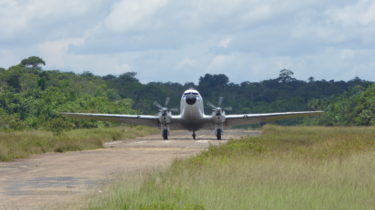
Legendary Douglas DC-3 planes are still plying the jungle routes of Colombia. Here’s some photos . At the end of the post is information for travellers on how to ride these classic cargo planes.
See related posts on Colombia Corners:
– Colombia’s Amazon: La Pedrera
– Adventures in gorgeous Guaviare
– Has time run out for Colombia’s DC-3s?
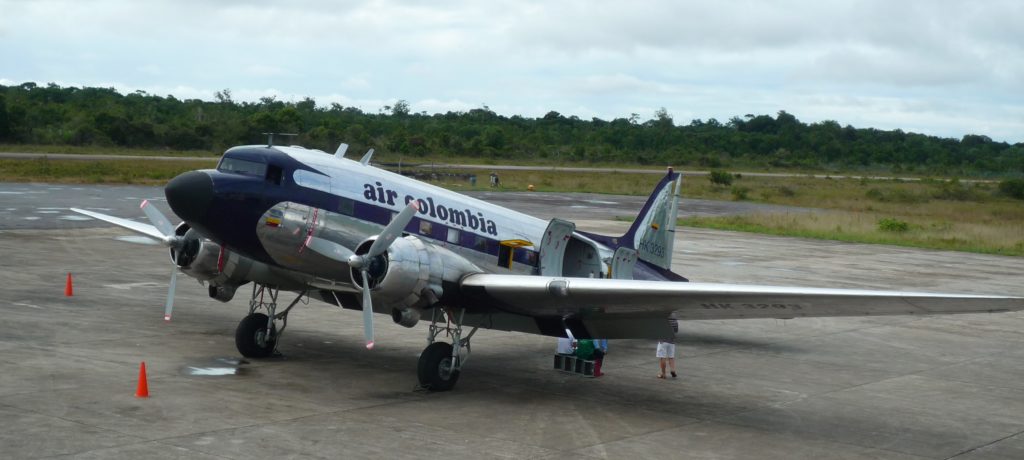
The Douglas DC-3 first flew in 1935. Over 16,000 were built, and amazingly around 2,000 are still flying today. Ironically these rugged aircraft were initially designed as luxury airliners, but quickly evolved into the wartime workhorses carrying cargo and troops as the C-47 Skytrain. These are the only pre-WWII plane still operational, though very few being used for scheduled passenger flights (as in Colombia).
As well as being highly functional, the DC-3 is a design classic. In fact it is the archetypal airplane, and has 114 movie credits including numerous war jaunts (Air America, The Wild Geese, Dirty Dozen), every Indiana Jones movie, several James Bond films and (in its luxury airliner mode) La Dolce Vita.
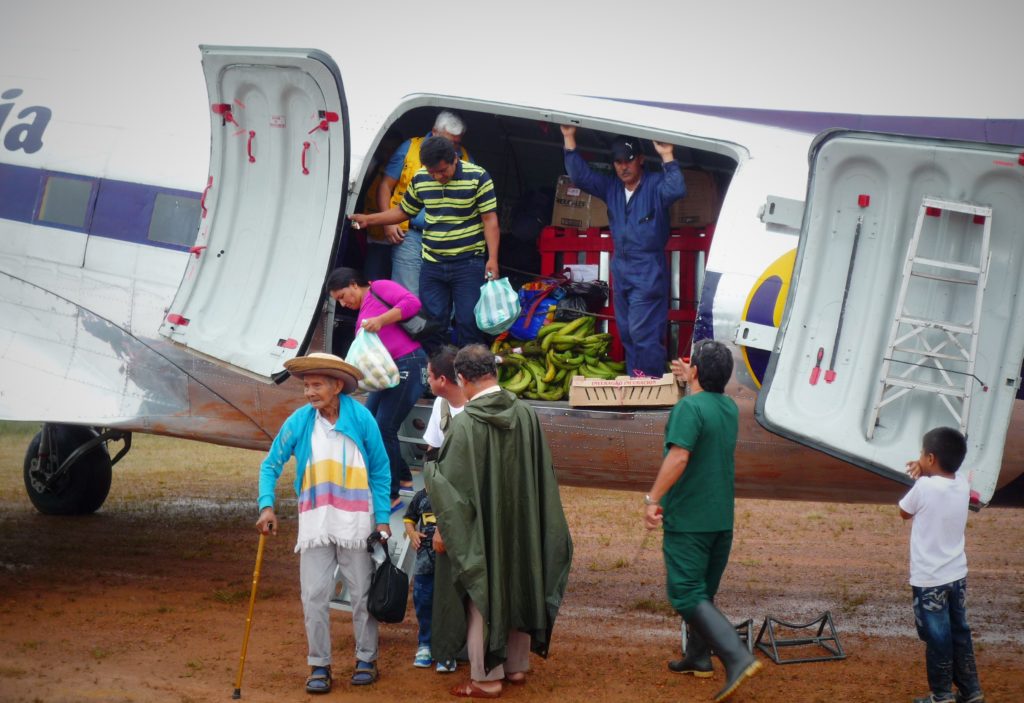
In 2013 I flew from Inírida, Guainia to San Felipe. on Colombia’s easter border. The plane I took, HK 3923, was made in Longbeach California in 1943, and went into service with RAF in the UK until 1949, took part in the Berlin Airlift of 1948 then went back to the US for Northwest Airlines, went to France in the 1950s with the Canadian Air Force, then back to Germany with the RCAF through the 1960s, was back in Canada doing commercial work in the 1970s, ended up in the Florida Keys in the early 1980s and sometime around 1984 arrived in Colombia.
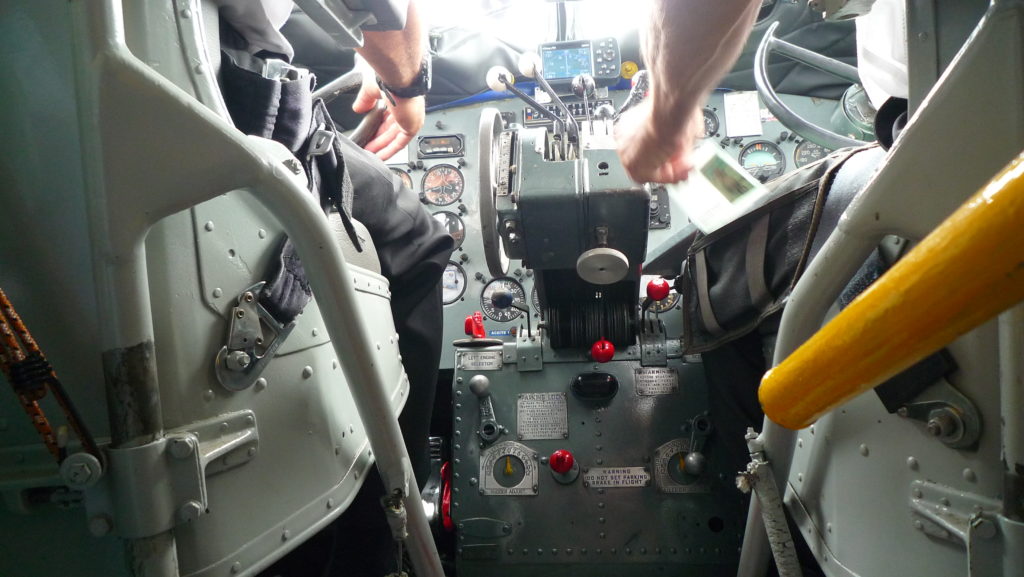
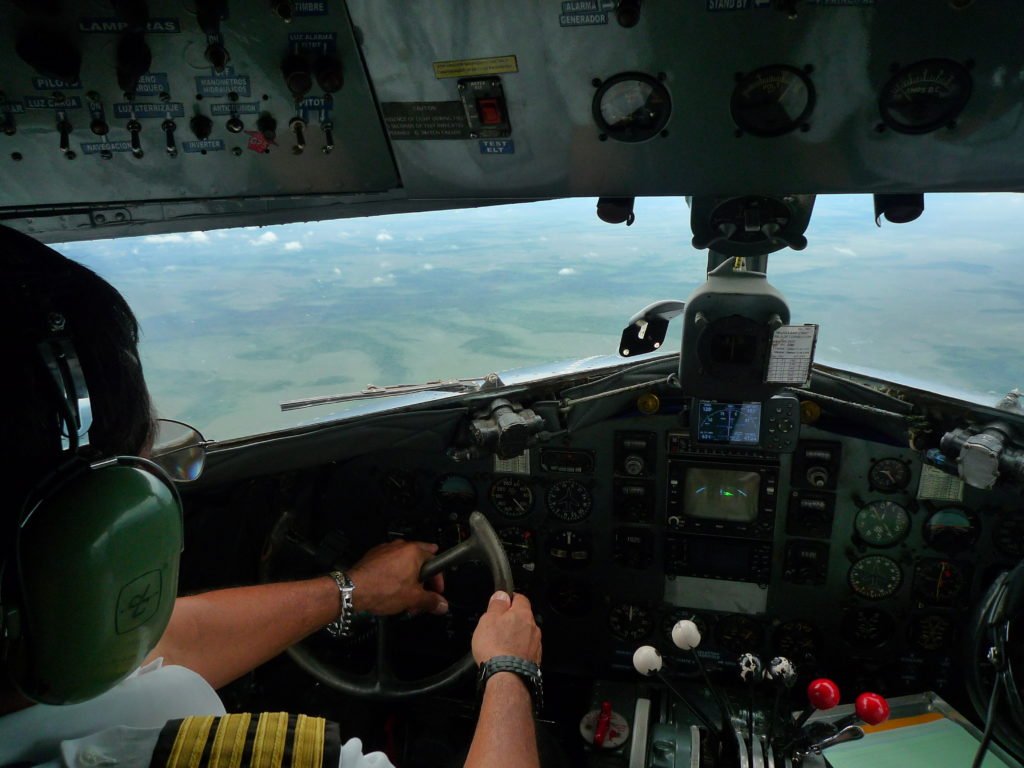
In 2019, I made flghts from Leticia to La Pedrera and back. There is just one flight a week so I had to spend 7 days in La Pedrera, see my story here: Colombia’s Amazon: La Pedrera



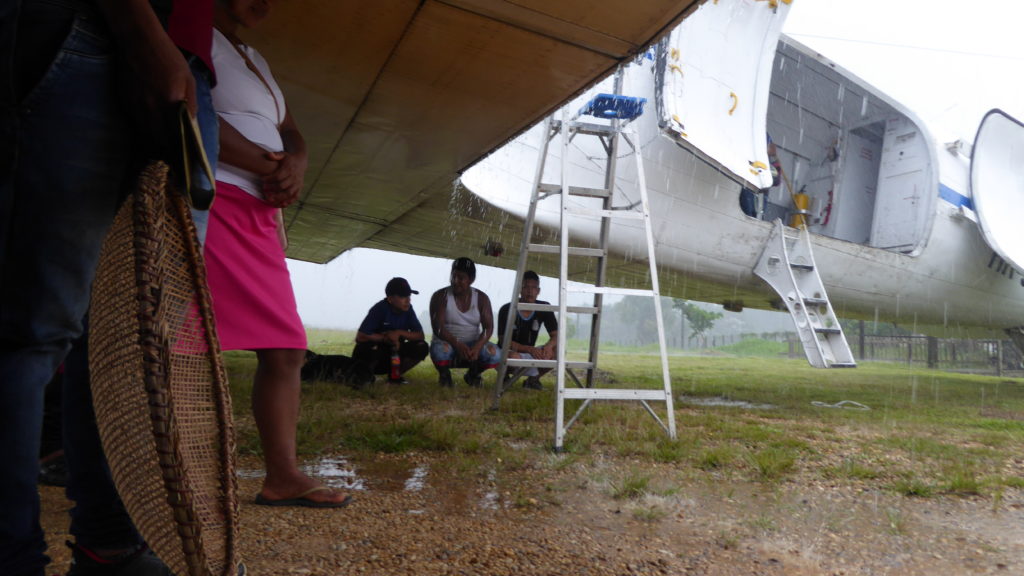
How to catch a Douglas DC-3 in Colombia
If you are in Colombia it’s possible to fly on one of these birds, you might even make it part of your travel plans if you are going to visit the Llanos (eastern plains) or Amazon area. These are not scheduled commercial flights that you can book on-line, rather ‘frequent planned cargo flights that carry passengers’ subject to weather, plane availability etc. Some travel agents resell tickets and there are some specific tourist flights to remote areas that use these planes.
FIRST – A WARNING. Flying in these old crates can be risky. While originally incredibly reliable machines, over eighty years they have worn out engines and crashes do occur. Check these links:
Colombia Corners: Has time run out for Colombia’s DC-3s? a story on this webside related to a fatal crash in early 2019 which killed all passengers and crew. There have been similar crashed over the years, such as in 1991.
A brilliant Al Jazeera documentary Risking It All: The daredevil Pilots of Colombia in the jungle DC-3s
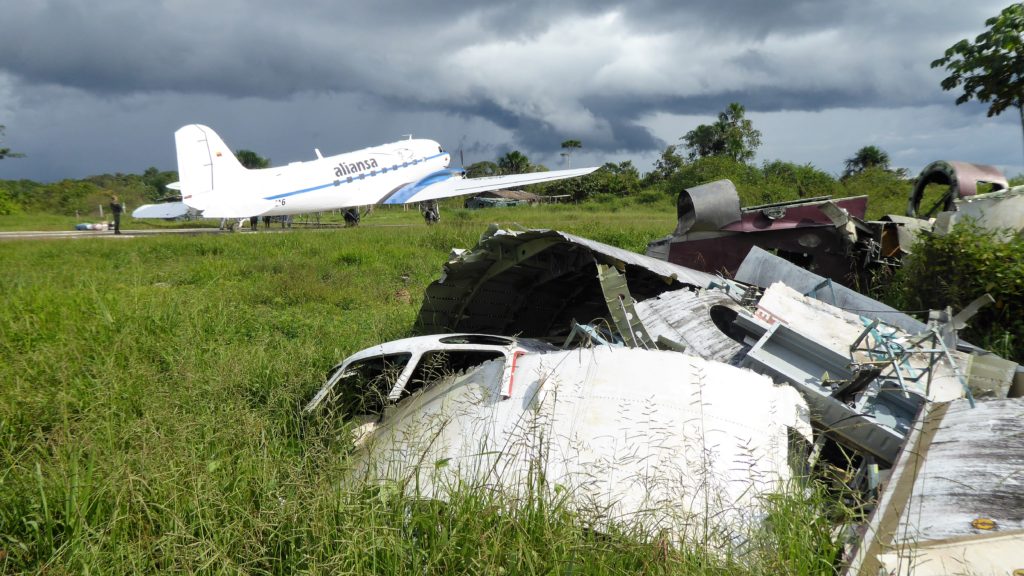
STILL WANT TO FLY? Good. The information below is from mid 2019 and subject to change: some operators are (literally) ‘fly by night’. NOTE: some foreigners have been turned away from the airline company claiming the flights are for ‘locals only’. Perhaps they don’t want the bad publicity, scrutiny and law suits following a crash with a ‘gringo’ on board. But I have made four flights with no problems, so try your luck. My guess it is easier to get regular flights in more remote airports ie San José de Guaviare or Leticia.
Some commercial tour companies offer DC-3 trips for foreign tourists online, though it is not clear if these are really going ahead. But check out:
- Some tours to the famous Caño Cristales in use DC-3s to take package tourists to and from La Vangaurda airport in Villavicencio to La Macarena, where visits to the famous river are based. But be aware the choice of aircraft depends on groups size so there is no guarantee you will use the DC-3.
- A tour overflying the amazing Chiribiquete National Park with Colombia Oculta has used DC-3s in the past (with the doors off and passengers harnessed in for safety). But recent videos show newer planes so do check. These very expensive trips (US$1,000 per person) but the only way to see Chiribiquete, a natural wonder of the world.
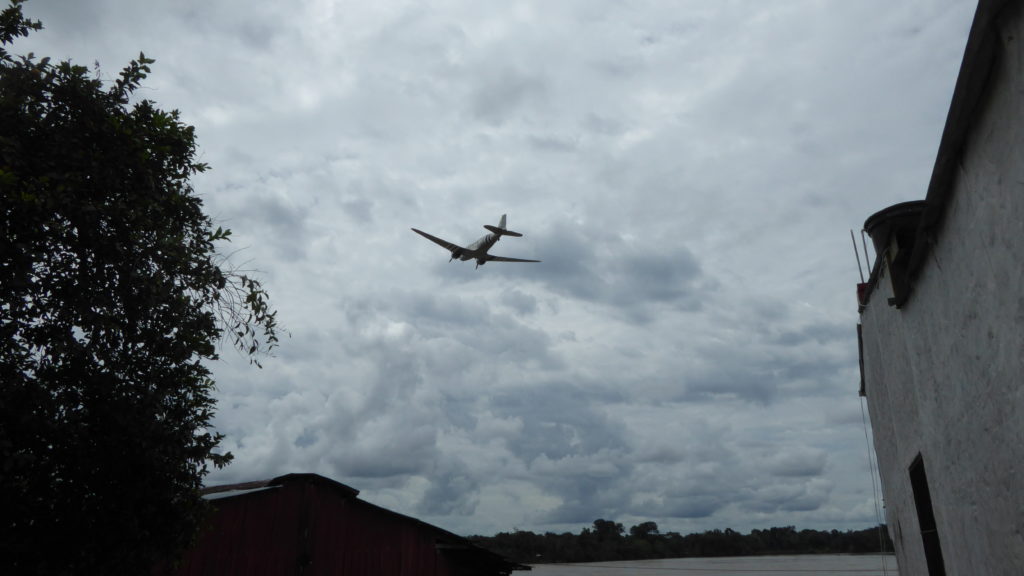
The cheaper option for experiencing a DC-3, which will cost around US$100 or less per leg (one hour flight) is to take a regular cargo/passenger flight between jungle destinations.The hub for jungle and Llanos plane operators is Villavicencio’s La Vanguardia Airport, four hours by bus or car down the mountain from Bogotá. This where DC-3s are based and maintained and start their routes. It is very hard to track down information of DC-3 flight operators as companies seem to change names, don’t usually have websites, and seem to rely on their small offices at La Vanguardia. Two that seem to be contactable in 2019 are:
- Aerolinea del Llano: Alas
- Transporte Aereo Del Vaupes TAVA Ltd I flew twice with TAVA in 2019, from Leticia to Tarapacá and La Pedrera, and back. TAVAs contact numbers are (+57) 312 447 2130, (+57) 321 423 4879, (+57) 310 877 7835
Other minor hubs for DC-3s are Leticia, in Amazonas, and San José del Guaviare. Other stop-offs are Iniridá in Guainia, Pto Leguizamo in Putumayo, Mitú in Vaupes, and jungle villages such as Taraira, La Pedrera, Tarapacá, La Chorrera, Araracuara, and many more.
I flew twice with TAVA in 2019, from Leticia to Tarapacá and La Pedrera, and back. The route taken by the plane was Villavicencio – Saj José de Guaiviare – Taraira – La Pedrera- Tarapacá -Leticia then the plane spent the night in Leticia before returning next day Leticia- Taraira – La Pedrera -Tarapacá . Taraira – San José de Guaviare – Villavicencio.

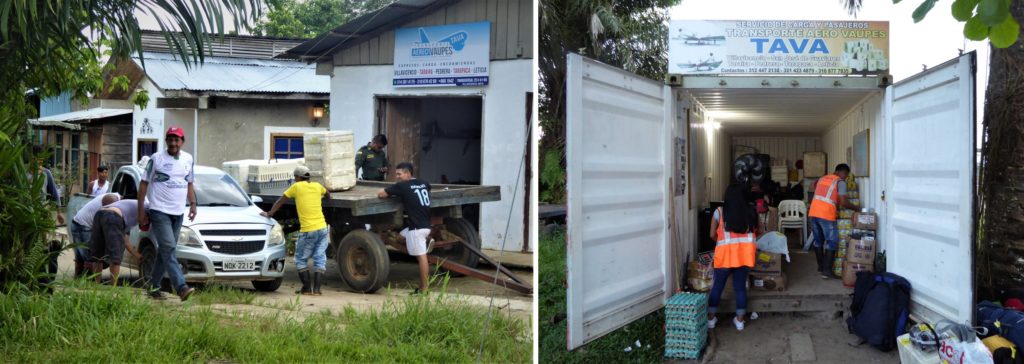
One possible trip to experience a DC-3 would be to take the Villavicencio – San José de Guaviare leg. San José is a great tourist destination and you can easily spend a few days there, maybe returning to Villavicencio by bus (5 hours). If you head into remote areas in Amazonas, you might have to spend several days before you can get a flight out. But there are usually ‘air taxis’ (small Cessnas) that pop in and out of all these airfields and have spare seats they will give you at reasonable cost. But be aware you might be stuck in the jungle for a few days more than expected.
That’s part of the fun of Colombia’s remotest areas. Enjoy!
SOME LINKS
